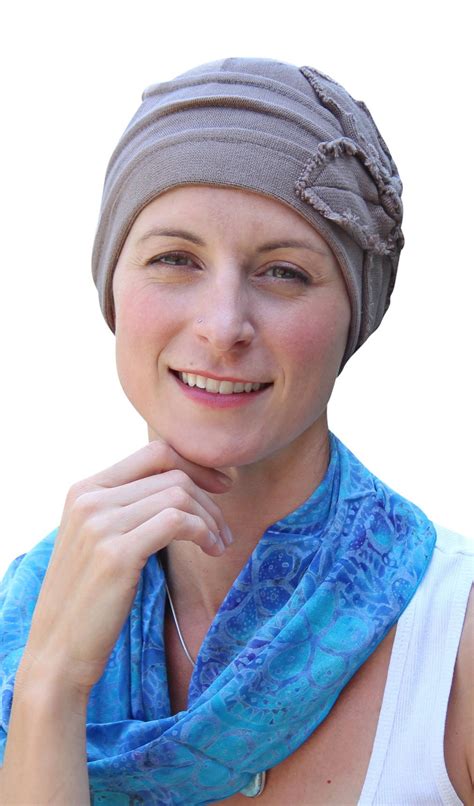Chemotherapy can have a significant impact on a patient’s physical and emotional well-being. Hair loss is a common side effect of chemotherapy, which can be distressing and affect self-esteem. Head coverings offer a practical and stylish solution to help patients cope with these challenges.

The Importance of Head Coverings
- Protection: Head coverings protect the scalp from sun damage, which can increase the risk of skin cancer.
- Comfort: They provide warmth and insulation during cold weather and absorb moisture from sweat.
- Privacy: Head coverings can provide a sense of privacy and comfort in public spaces where hair loss may draw attention.
- Psychological Support: They can help patients feel more confident and in control during a challenging time.
Types of Head Coverings
There are numerous types of head coverings available to suit different preferences and needs. Some popular options include:
- Wigs: Wigs are artificial hairpieces that offer a realistic and natural-looking cover.
- Head Scarves: Head scarves are versatile and affordable, and can be worn in various styles to complement different outfits.
- Hats: Hats provide warmth and sun protection, and come in a wide range of fabrics and styles.
- Turbans: Turbans are stylish and provide full head coverage, making them ideal for individuals who experience significant hair loss.
Choosing the Right Head Covering
Selecting the right head covering is a personal decision that depends on factors such as:
- Material: Consider the fabric’s comfort, breathability, and ease of care.
- Style: Choose a style that complements your facial features and personal taste.
- Coverage: Determine the level of coverage you need, whether it’s partial or full.
- Price: Head coverings vary in price, so set a budget before making a purchase.
Medical Considerations
When choosing a head covering, consider the following medical factors:
- Scalp Sensitivity: Avoid materials that irritate the scalp, especially if it is sensitive or has undergone radiation therapy.
- Fitting: Ensure the head covering fits comfortably and securely without causing pressure or discomfort.
- Hygiene: Choose head coverings that can be easily washed or sanitized to prevent infections.
Benefits of Head Coverings
- Improved Physical Health: Protects the scalp from sun damage and keeps the head warm.
- Enhanced Comfort: Provides warmth and absorbs moisture, improving overall well-being.
- Emotional Support: Boosts confidence and provides privacy, reducing anxiety.
- Social Acceptance: Helps patients feel more comfortable in public spaces by minimizing attention drawn to hair loss.
Tips and Tricks for Wearing Head Coverings
- Use a Wig Cap: A wig cap creates a barrier between the wig and your scalp, reducing friction and preventing irritation.
- Experiment with Styles: Try different ways of tying and wearing head scarves to create unique and stylish looks.
- Accessorize: Use headbands, hair clips, or jewelry to elevate your head covering and express your personality.
- Use Hairspray or Mousse: Apply a light layer of hairspray or mousse to head scarves to keep them in place.
Common Mistakes to Avoid
- Wearing Head Coverings Too Tightly: This can cause discomfort and pressure on the scalp.
- Ignoring Scalp Hygiene: Neglecting to clean head coverings can lead to infections.
- Choosing Materials that Irritate the Scalp: Synthetic or harsh materials can cause discomfort, especially for sensitive scalps.
- Sacrificing Style for Comfort: It’s possible to find head coverings that are both comfortable and stylish.
Frequently Asked Questions (FAQs)
-
Is it okay to wear a head covering all the time during chemotherapy?
– Yes, it is perfectly acceptable to wear a head covering whenever you feel comfortable. -
How often should I wash my head covering?
– Frequency will vary depending on the material and usage. As a general rule, wash head coverings after every 2-3 uses. -
Can I wear a head covering after chemotherapy is complete?
– Yes, some individuals may choose to continue wearing head coverings even after hair growth resumes. -
Where can I find support for head covering choices?
– Reach out to cancer support groups, nurses, or your healthcare team for guidance and resources. -
Are there pre-tied head scarves available?
– Yes, many companies offer pre-tied head scarves for convenience and ease of use. -
What is the average cost of a head covering?
– Costs vary depending on the type and material. Expect to pay anywhere from $15 to $300 for a head covering. -
Are there any special considerations for head coverings during winter?
– Choose head coverings made from warm and insulating materials to protect against cold weather. -
Can I use a head covering to cover bald spots after radiotherapy?
– Yes, head coverings can effectively cover bald spots resulting from radiotherapy and provide comfort and warmth.
